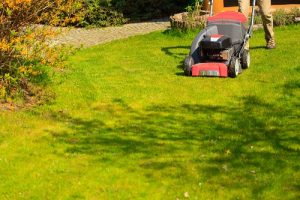 Summer could be among the toughest times of the year for landscapes and lawns especially when we reside in a place with a warm climate. Although summer is the perfect time for lawns to thrive, it is also a time for less well maintained turf to suffer several issues that could result in poor health and stress. With a few basic lawn care practices, you should be able to significantly improve your lawn while you enjoy the warm summer months.
Summer could be among the toughest times of the year for landscapes and lawns especially when we reside in a place with a warm climate. Although summer is the perfect time for lawns to thrive, it is also a time for less well maintained turf to suffer several issues that could result in poor health and stress. With a few basic lawn care practices, you should be able to significantly improve your lawn while you enjoy the warm summer months.
Effective Lawn Watering
Water is among the most important aspects of lawn care. The right lawn care watering practices will help your lawn send water down to the roots and deeper into the soil, beyond the evaporation level of the top part of the soil, which consequently will make your turf more drought and heat tolerant.










